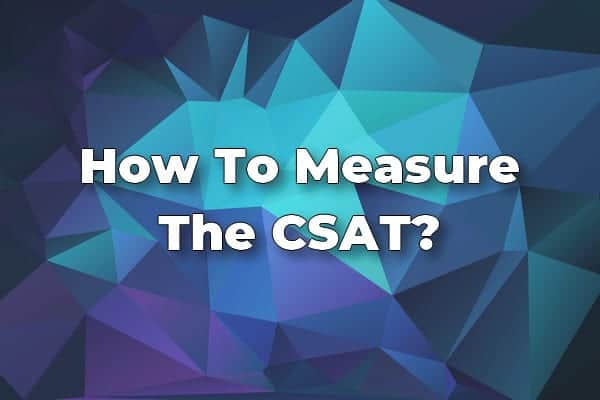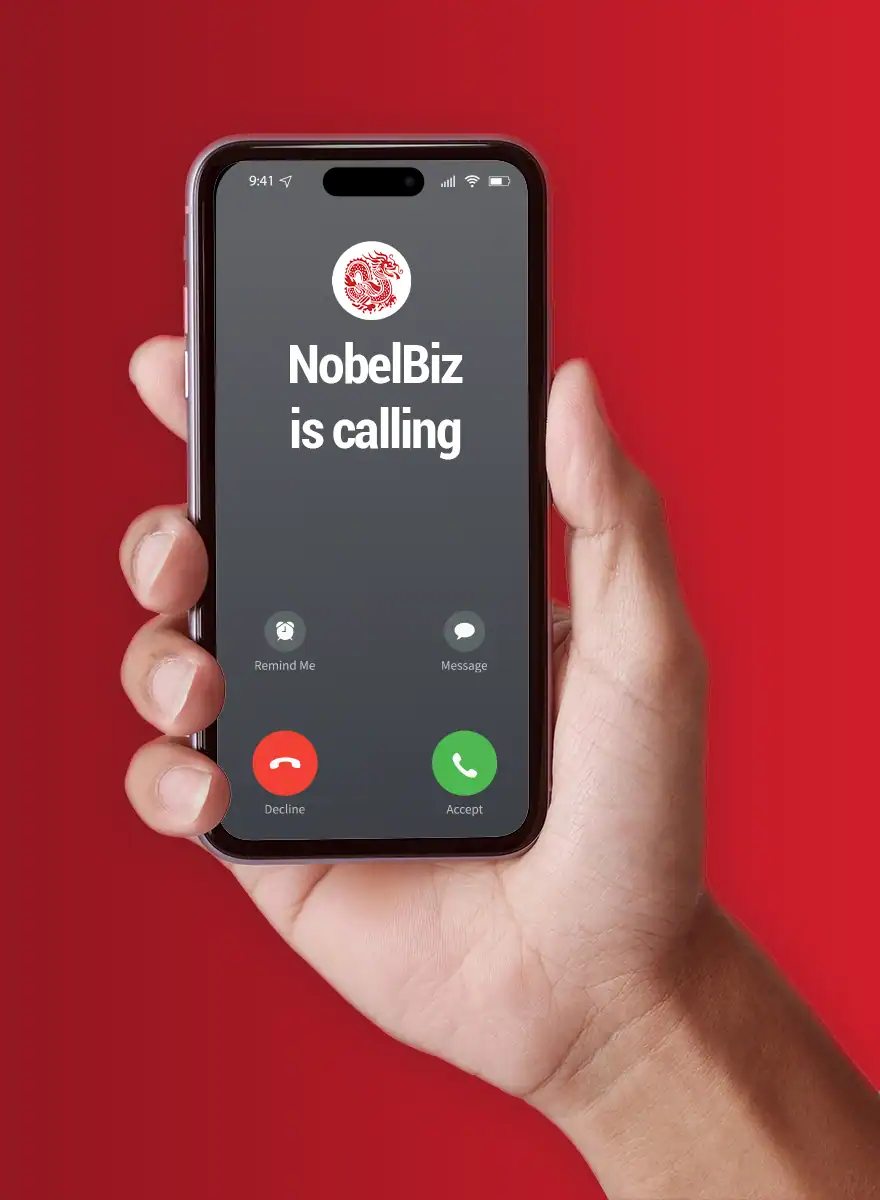The Customer Satisfaction Score is a popular metric used by call centers to assess buyer satisfaction. It instantly collects “on-the-spot” comments after a purchase experience or engagement with the brand to offer real-time client feedback. The CSAT is based on the customer’s emotions, as opposed to the NPS, which is intended to provide a more reasonable perspective.
The customer satisfaction score aims to get feedback on specific topics such as products or services, quality of interactions with call center agents or after-sales support, purchase procedures, customer experience impression, and so on. Read this article to learn about the stakes and how to measure and analyze this key performance indicator.
Key Takeaways:
- Collecting as many responses as possible is essential to measure the CSAT
- The questions to measure the CSAT should be straightforward, brief, and simple.
- You should always add an open question
- NPS and CSAT are not interchangeable; each of them has different goals.
How to measure the Customer Satisfaction Score CSAT?
The CSAT is expressed as a percentage. The result ranges from 0% to 100%. To obtain a representative rate, collecting as many responses as possible from clients before proceeding with the calculation is essential.
This satisfaction rate is measured as follows:
CSAT = (number of positive responses / the total number of responses) x 100.
To better understand the calculation, let’s take a concrete example. Let’s assume that 1000 clients responded to your customer satisfaction survey. Five hundred said they were “delighted,” while 1200 said they were “satisfied.” That means 1700 of the 2000 respondents are satisfied.
So, here’s what you’ll need to do to reach your score:
CSAT = [1700 / 2000] x 100
Your CSAT score is 0.85 x 100, or 85%.
What questions should be asked to obtain a CSAT score?
The questions to measure the customer satisfaction score should be straightforward, brief, and simple. To collect as much relevant client data as possible, your call center can say, for example:
- “Did you enjoy the greeting extended by the agents?”
- “How satisfied are you with the shopping experience?”
- “How happy are you with our customer service department’s responses?”
Providing a restricted number of closed responses is recommended to ensure that the answers are readily interpretable and leave no opportunity for ambiguity. You can, for example, choose between a primary “yes” and “no” option and a precise scale of values:
- Very satisfied
- Satisfied
- Neutral
- Not satisfied
- Not at all satisfied
Of course, each call center can select its preferred scale value. However, the following scales are among the most often used by businesses:
- The textual scale: collects comments based on degrees of satisfaction given in the form of phrases often used to communicate feelings, such as “Very satisfied,” “Rather satisfied,” “Neutral,” “Rather unhappy,” and “Rather satisfied.”
- The numerical scale: the collected results are quantified here. The proposals are generally ranked from 0 to 10.
- The symbolic scale: clients may express their experience by selecting the most relevant emoji or smiley.
The questions answered to acquire a CSAT score are, as you can see, exact. The CSAT enables you to understand how consumers feel at a critical point in their relationship with your firm.
As a result, the information acquired helps you rapidly discover your customers’ pain areas, learn how to enhance the quality of your customer interactions, and prioritize activities to fulfill your target’s quality expectations better.
To be successful in measuring Customer Satisfaction Scores, keep in mind that a question must:
- Be clear and comprehensive.
- Be easy to formulate.
- Be direct and leave no room for ambiguity or doubt.
- Maintain complete neutrality.
- Be able to produce an answer that corresponds to your type of scale.
When is the best time to ask your questions?
“Right away” is the perfect moment to ask your questions. The customer’s memory is then fresh, the consumer’s emotions remain intact, and the evaluation of his level of satisfaction, whether about his purchase experience or his relationship with the brand, is far more representative. It is not tainted by external variables such as a preconceived opinion, a criticism about your brand, or dissatisfaction with products or services, for example.
For this, creating a survey via a form that may be offered at the end of the interaction is best.
Proactive consumer engagement engagements will surpass reactive customer engagement interactions by 2025. According to Gartner, as customer service professionals reconsider their business model around customer assistance modes, shifting to proactive engagement will be their top focus.
How to interpret the CSAT?
An answer within the “Very Satisfied” or “Satisfied” categories is favorable. And a CSAT of 80% or more is considered an excellent result.
If, on the other hand, you get a percentage less than 50%, it indicates discontent, which might be due to an issue with your client connection or a problem with your product or service.
- A rating of 1, 2, or 3/5: This is where you should take the time to call these clients and find out what is bothering them. This step allows you to correct a negative experience while protecting the brand’s reputation.
- A rating of 4 or 5/5: A good result, but it doesn’t stop here. If you haven’t already, thank your delighted clients by giving them a proposal for a loyalty program or a sponsorship program to keep them loyal.
The CSAT model generates questions that are unambiguous, brief, straightforward, and comprehensible to everyone. They also help you to assess if your product or other enhancement measures were successful.
However, the CSAT’s limitations must constantly be considered.
What are the limitations of CSAT?
The limits of the CSAT rate are:
- Low response rate: Customers do not always take the time to complete satisfaction surveys. And it is tricky to establish your call centers’ customer satisfaction based on a few reviews.
- Not understanding the “why” aspect: Getting less than 85% on the CSAT is terrible. But not understanding why your customers are unhappy is even worse. In certain circumstances, a text area is not included in the questionnaire, preventing businesses from learning about the wrong side of the company. So, it would help if you consistently implemented questions like “Why did you chose this product?” to find out why.
Is the CSAT a better choice than the NPS Score?
NPS and CSAT are not interchangeable; each of them has different goals. The main thing is to select relevant and efficient KPIs for your call center goals. Moreover, using numerous indicators helps you to have a more global and accurate perspective of the problem.
The Net Promoter Score (NPS) provides a more binary view than the CSAT score by distinguishing your customers between:
- Promoters: Customers that are happy with your products or services are known as promoters or brand advocates.
- Detractors: Customers displeased with their services are referred to as detractors.
We suggest that if you track these two KPIs, send out frequent customer satisfaction surveys to get representative data and focus on a precise analysis of the responses.
 Customers nowadays are digital-first, and that is non-negotiable. They want to be informed, like to be the first to hear about breaking news, and value being present when significant events occur. They want brands to communicate in their language and through their platforms. This may either be a tremendous challenge or an excellent opportunity! More from our video on How to Build a Seamless Customer Experience Using Omnichannel?
Customers nowadays are digital-first, and that is non-negotiable. They want to be informed, like to be the first to hear about breaking news, and value being present when significant events occur. They want brands to communicate in their language and through their platforms. This may either be a tremendous challenge or an excellent opportunity! More from our video on How to Build a Seamless Customer Experience Using Omnichannel?
CSAT survey best practices
The CSAT is a very adaptable KPI, allowing call centers to modify the questions and assess satisfaction at particular and targeted levels. By delving a bit deeper into this signal, your managers may discover which components of the product, service, company, or customer service the consumer loved or not.
To truly harness the CSAT for your business, you must:
- Change your questions: happiness with a product, satisfaction with customer service, etc….. With open questions, you can determine which aspects the customer appreciated or not the product, the service, the company, or the customer relationship.
- Ask the right questions at the right time: Set up a CSAT survey after the customer experience to obtain the most honest and sincere responses possible.
- Add open questions: The collected consumer feedback will help you more readily discover the aspects that can contribute to improving your business while also measuring the happiness of your customers more precisely.
NobelBiz Omni+ is a Cloud Contact Center Solution that integrates all communication channels (phone, social media, webchat, and SMS) into a unified platform. This ensures that your consumers enjoy a seamless and memorable experience, which gives your call center a high CSAT rate.
Also, our telecommunication services, NobelBiz Voice Carrier, can meet the needs of any call center, regardless of size, industry, or activity (Inbound, Outbound, or Mixed). Our expert customer service representatives are accessible 24 hours a day, seven days a week. That is why we are known as the industry’s promise keepers.

Michael McGuire is a contact center industry expert with almost two decades of experience in the space. His experience includes roles as Director of Contact Center Digital Transformation at NobelBiz, and as Director of Operations at FLS Connect, managing multiple call centers. As President of Anomaly Squared and Targeted Metrics, Michael successfully transitioned companies into remote operations and significantly boosted revenues. With a strong background in customer service, leadership, strategic planning, and operations management, Michael excels in driving growth and innovation in the call center space.
Mike is also a proud Board Member for R.E.A.C.H Trade Group, promoting consumer protection and satisfaction and Co-host of the Off Skripted Podcast – a show about Life, Call Centers and everything in between.







